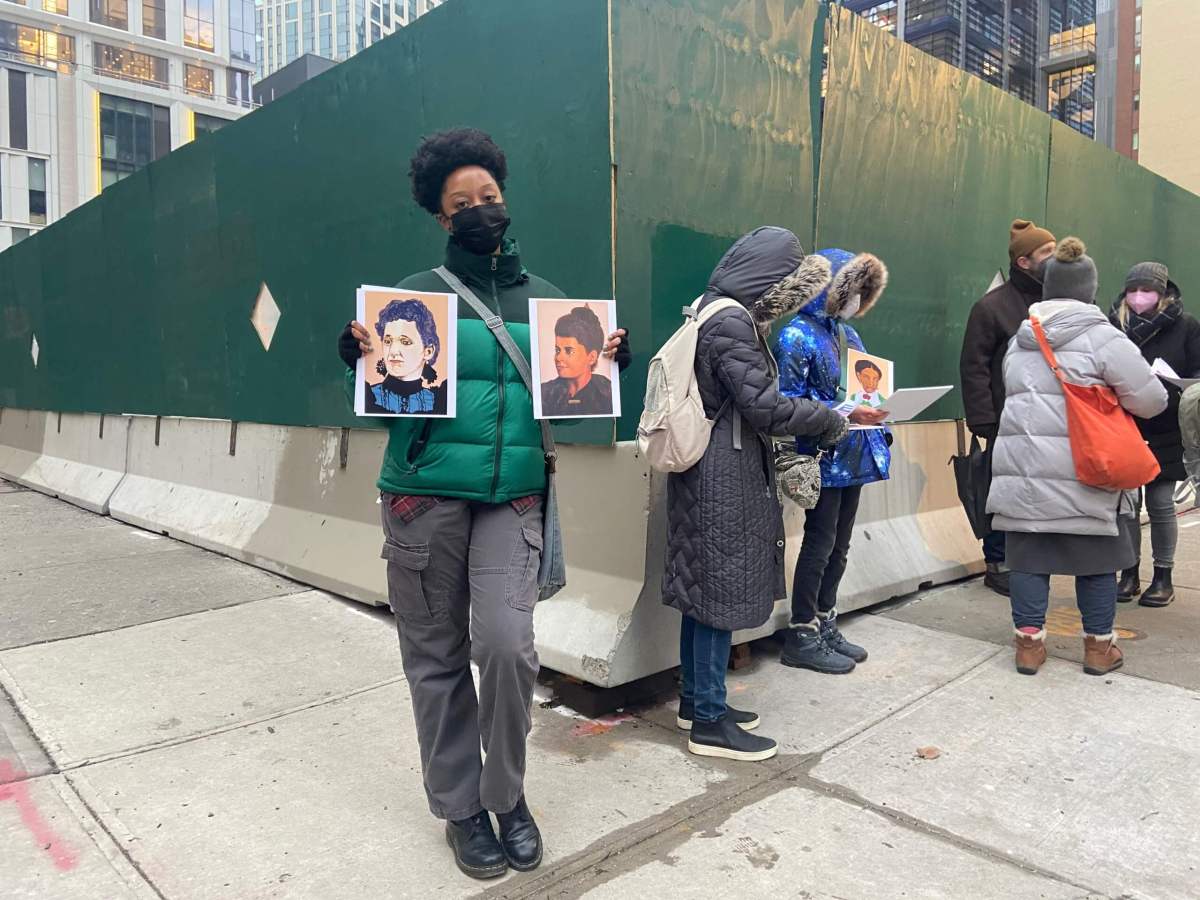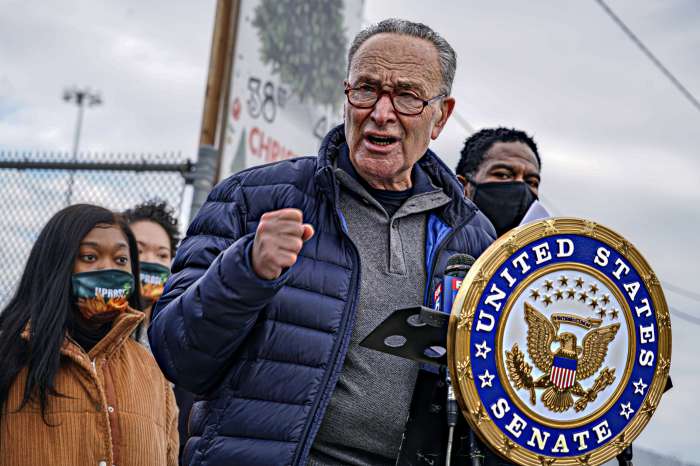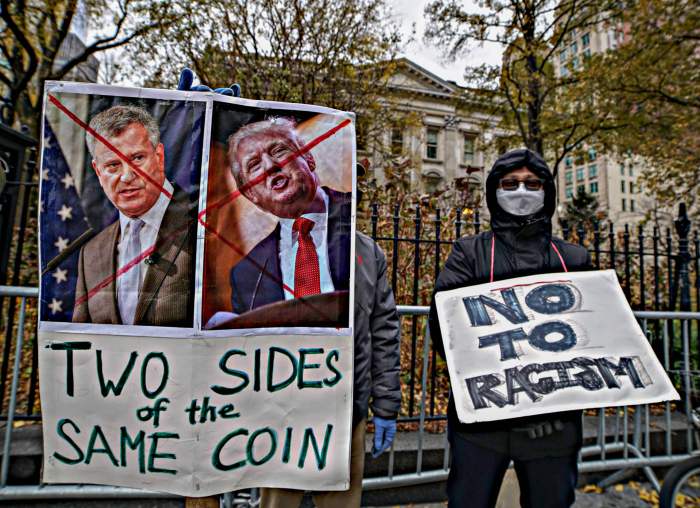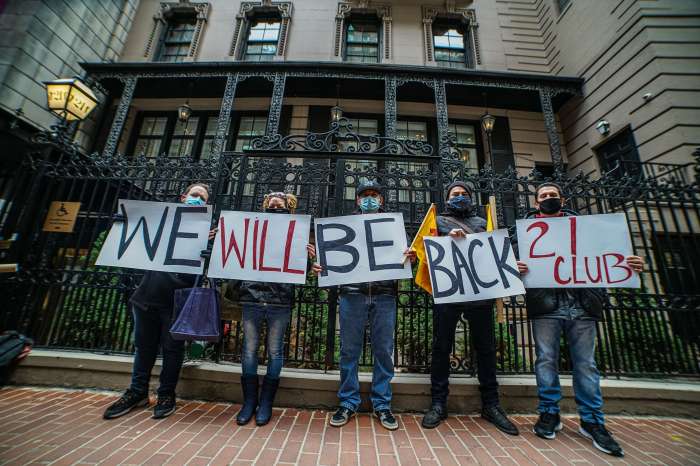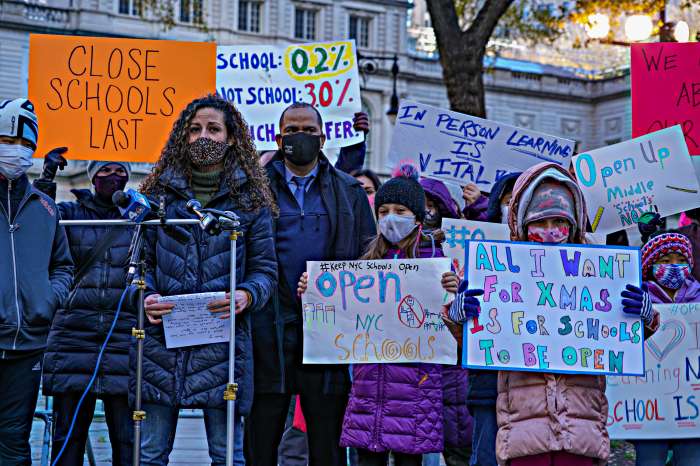Activists rallied against the city’s plan to put a dog run as part of a larger park atop a site believed to have been part of the Underground Railroad in Downtown Brooklyn.
The city has started building the long-delayed 1.15-acre greenspace known as Abolitionist Place on a lot at Willoughby and Duffield streets with a dog run planned next to 227 Duffield Street, a city-owned, landmarked row house that once belonged to 19th-century slavery abolitionists Thomas and Harriet Lee Truesdell.
The small group of demonstrators gathered on Monday, Martin Luther King Jr. Day, and included family of former occupants of the now-decayed building and advocates for Brooklyn’s abolitionist history, and they passed out flyers about the project led by the city’s quasi-public Economic Development Corporation.
EDC’s plans include a text-based installation by artist Kameelah Janan Rasheed inspired by that heritage, but one local lamented that officials declined to set up their proposed monument dubbed “Sisters in Freedom” honoring the five pioneering Black women Ida B. Wells, Maritcha Lyons, Sarah Smith Garnet, Victoria Earle Matthews and Dr. Susan Smith McKinney.
“The NYC Economic Development Corporation wants to erase history by rejecting what we had proposed with the monument for these five women,” said Raul Rothblatt, who slammed the move to install a play pen for local pups next to the historic structure “terrible.”

Rothblatt’s daughter Charlotte’s Girl Scout Troop 2663 decided to write a petition encouraging community members to become educated on the history underneath their feet.
“I want people to know more about the Sisters in Freedom and about the Underground Railroad,” the 13-year-old said. “I think people would care more about this if they knew it existed.”
The Rothblatts were joined by Shawne Lee, the daughter of the late Joy Chatel, a local figure that once lived at 227 Duffield, and Lee noted the importance of keeping the history of the Truesdells alive.
“They were not only instrumental for the liberation of their people, but for the suffrage movement as well,” Lee said. “They did not shut down for speaking up for the injustices of their people, and they lived here in Brooklyn.”
Fellow rally attendees said that the public’s ignorance of the significance of the lot that was standing in the way of getting their desired monument constructed.
“I just know that even the people walking around this plaza right now don’t know about this history,” said Devan Nelson, a rally attendee and member of the historically-Black Delta Sigma Theta Sorority, Incorporated. “If they knew that this was a stop at the Underground Railroad, they wouldn’t let this happen. They just need to know.”
Chatel, who died in 2014, believed that along with her home, 231 Duffield and 436 Gold Street were other locations with connections to the Underground Railroad. When she was still alive she would show the large tunnel underneath her home that may have been used to escape slavery.
Surrounded by a green construction fence, the unassuming lot is filled with gravel and debris, and Lee said her mom’s former home should become a museum of the area’s anti-slavery movement.
“My mother, when she was alive, always said she wanted to turn her house into a museum so having that and the monument would be – in my opinion – a great investment for the city,” said Lee. “And what better way to celebrate these women and this history and the bravery of women of color who really fought through oppression?”



